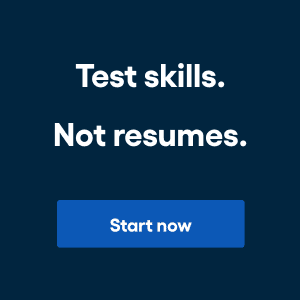Job seekers will spend an average of 11 hours a week looking for a new job. That’s a lot of time spent reading job descriptions, and eventually, the endless lists of preferred qualifications and responsibilities start to look the same.
We ask a lot of our job candidates during the application process. Just to get an interview, applicants need to submit a resume that caters to the open listing; personalize a cover letter; provide references; and more. However, many companies don’t go the distance to give their job descriptions the same level of attention they ask of a job seeker.
More importantly, formulaic job descriptions can cause companies to miss out on top talent. Conversion rates on career sites are down: of those who visit a company’s site, fewer than 9% apply for an open position. Job descriptions just aren’t getting candidates excited about the opportunities that are available out there. In a competitive job market where unemployment is at a low 3.9%, making your job descriptions stand out is more important than ever. Here are some of the ways a recruiter make their job descriptions stand out.
Focus on the big picture
It’s important for millennial workers to feel like their work is contributing to something bigger. The next generation of workers seeks opportunities that allow them to grow, contribute meaningfully to an organization, and feel like management decisions are transparent and inclusive. Recruiters can tap into this desire by linking job descriptions to overall organizational goals. Keep the listed job functions limited to five to seven bullets and spend more time describing how the position can contribute to key business objectives. Sentences like “Be a part of the marketing team that works toward X% growth this year” or “Help us as we roll out X new products by the end of 2019” can spur goal-minded candidates to submit their resume.
Use video, graphics, and other visuals
Some companies try to stand out by using job titles like “ninja” or “rockstar”. Not only does this sound cliche and inauthentic, but it doesn’t make a job opening easily searchable. Stick to straightforward language and lean on visuals or video to provide the brand identity you’re looking for. Video can be a great way to show the culture of your company without sounding lame or inauthentic. A great example of this is Twitter’s very tongue-in-cheek employer branding video from 2013.
Other ways to spice up your job description is to have an employee testimonial from someone who’s been in the position before; an infographic laying out the key qualifications and requirements; or even just some pictures to break up the text a little.
Give them a reason to apply
Remember: candidates are scrolling through dozens of job descriptions each day in search of a new job. Salary and benefits are the top two factors a candidate considers before accepting a job offer. So, be transparent in your job description about what those specific perks are.
What are the benefits that come with being an employee at your company? These can be as simple as the chance summer Friday afternoons off or a great work culture. Don’t feel as if you have to compete with the Googles and the Facebooks that offer free breakfast and video games. Opportunities for advancement or to learn a new skill can be the thing that sets you apart from other companies. Do a little recruitment marketing and boost your brand by showing off what awaits if someone applies for the position.
Get rid of buzzwords
One of the reasons why all job descriptions blur together is that they all sound the same. Recruiters in every industry love using terms like “enthusiastic and motivated” and “willingness to learn.” Buzzwords are brutal and can turn away candidates who are looking for a forward-thinking, innovative company. Often, buzzwords are inadvertently used as a crutch to avoid explaining the real requirements of the position. Does “enthusiasm” really refer to someone who vocalizes support and positive feedback to their team, or is it someone who isn’t afraid to meet deadlines and works diligently? Most recruiters or hiring managers wait until the interview process to vet candidates with their specific brand of enthusiasm, but with a better job description, this process can be streamlined.
Don’t go crazy on the requirements
Purple unicorns don’t exist. Neither do regular colored unicorns. Unicorns aren’t real, period. Many recruiters write job descriptions that simply aren’t realistic. That laundry list of unrealistic expectations could be hurting your recruitment efforts more than you realize. Research shows that women are unlikely to apply for a position unless they meet 100% of the requirements. If you’re hoping to be more inclusive in your hiring this year, scale back the qualifications in your job description to those which are absolute requirements. The “nice-to-have” skills should be left out – otherwise, you could be scaring away perfectly well-qualified candidates who are intimidated by the description.
Write for inclusivity and diversity
Speaking of hiring inclusively, the way you write your job description could be unwittingly sending the wrong message to a potential candidate. Of course, you want to include language or images that showcase your company culture; however, don’t try to write in a way that attracts “people like us.” Ensure your descriptions are free from gender bias using tools like The Gender Decoder, which tells you whether your description is feminine-coded (written with more of a leaning towards a female candidate), masculine-coded (written with more of a leaning towards a male candidate) or neutral (no leaning). Using more neutral wording can help open up your candidate pool by 42% and improve your application rates dramatically.




















